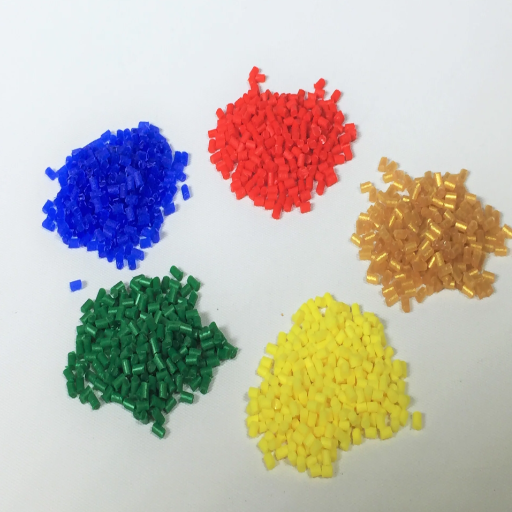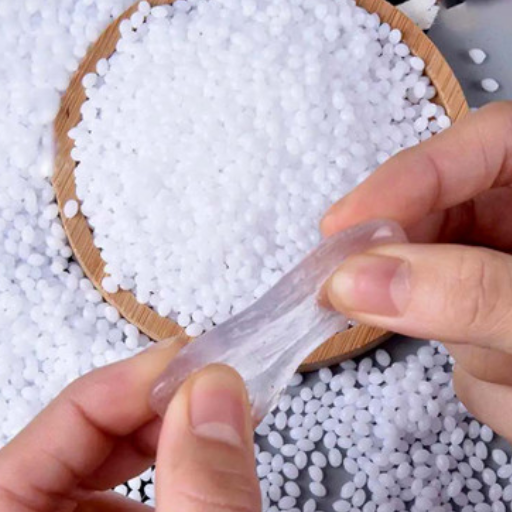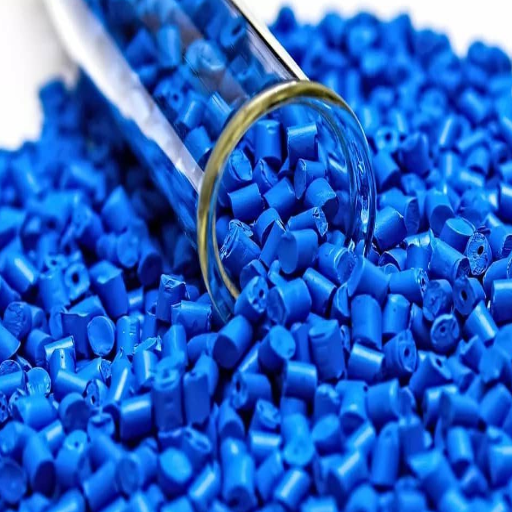Plastic is everywhere in our daily lives—from food containers to household items—and if you’ve ever turned one over, you’ve likely noticed a small triangle with a number inside. But what do these numbers mean, and why should you care? If you’ve spotted the number “5” within this recycling symbol, you may be holding a material that plays a significant role in both sustainability and the environment. This article dives into the meaning behind the number 5, explores the type of plastic it represents, and offers practical insights into how to manage and recycle this material responsibly. Whether you’re keen to make eco-conscious decisions or simply curious about the intricacies of plastic labeling, this guide will equip you with the knowledge to make informed choices.
What is the Number 5 Plastic and Its Properties?
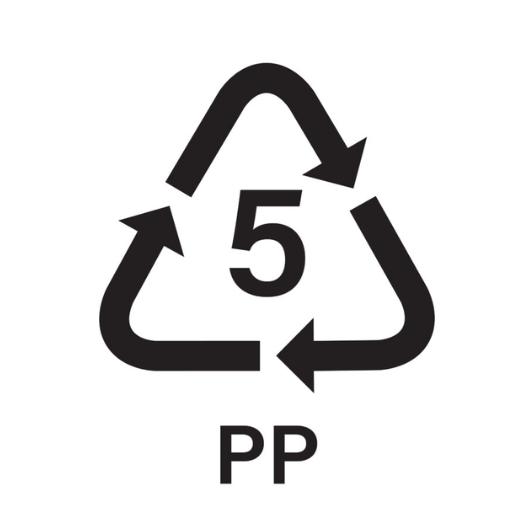
Number 5 plastic, also known as polypropylene (PP), is a durable and lightweight type of plastic. It is commonly used in items such as yogurt containers, bottle caps, takeaway food containers, straws, and certain types of packaging. This material is highly resistant to heat, making it suitable for reusable containers and microwavable products. Additionally, polypropylene is considered safe for use in food packaging due to its low risk of leaching chemicals. While it is recyclable, access to proper recycling facilities for Number 5 plastic can vary by location, so it’s important to check local recycling guidelines.
What Type of Plastic is Number 5?
Plastic marked with the recycling number 5 is polypropylene (PP), a versatile and durable plastic widely used in various applications due to its resilience and lightweight nature. Polypropylene is resistant to heat, chemicals, and moisture, which makes it particularly suitable for food packaging, medical supplies, and automotive components. Common items made from polypropylene include reusable food storage containers, straws, bottle caps, yogurt tubs, and even certain textiles and ropes.
Polypropylene has a relatively low density, which contributes to its lightweight properties and efficiency in manufacturing. Studies indicate that over 70 million tons of polypropylene are produced annually worldwide, making it one of the most commonly used plastics. Furthermore, polypropylene is considered a sustainable option compared to other plastics because it is recyclable in many regions.
However, while recyclable, proper sorting is critical to ensure it is processed correctly. Recycling facilities often repurpose polypropylene into items like storage bins, landscape edging, pipes, and other secondary products. It’s important to check local recycling guidelines since not all facilities accept polypropylene. By increasing awareness and improving recycling systems, polypropylene can have a reduced environmental impact while remaining a valuable material for a variety of industries.
Characteristics of Polypropylene (PP)
Polypropylene (PP) is a versatile thermoplastic polymer widely recognized for its unique combination of properties that make it a valuable material across various industries. Key characteristics of polypropylene include:
Durability and Strength
Polypropylene is known for its high tensile strength and resistance to wear and tear, making it a preferred choice for applications requiring tough and long-lasting materials. Its ability to withstand heavy loads without breaking ensures its utility in packaging, automotive components, and appliances.
Chemical Resistance
One of PP’s standout features is its resistance to a wide array of chemicals, including acids, bases, and organic solvents. This characteristic makes it ideal for chemical containers, medical equipment, and other industrial applications.
Lightweight
Polypropylene is remarkably lightweight, with a density of approximately 0.90 g/cm³—the lowest among common plastics. This property makes it energy-efficient for transportation and practical for lightweight product designs.
Temperature Stability
With a melting point ranging from 130°C to 171°C (266°F to 340°F), polypropylene offers excellent thermal stability. It is capable of enduring high and low temperatures, making it suitable for items like microwave-safe containers and cold storage applications.
Flexibility
Polypropylene is semi-rigid yet sufficiently flexible, allowing it to be molded or extruded into various shapes with ease. This flexibility makes it especially valuable in producing fibers, films, and injection-molded products.
Recyclability
Polypropylene is recyclable and often marked with the recycling symbol “5.” When recycled, PP can be repurposed into new products like construction materials, automotive parts, and reusable containers, contributing to sustainability and reducing waste.
Low Moisture Absorption
PP exhibits minimal absorption of moisture, which helps preserve its structural integrity over long periods. This attribute is particularly relevant for outdoor uses where exposure to humidity and water is common.
Cost-Effectiveness
Compared to other polymers, polypropylene is cost-effective due to its efficient manufacturing process and the abundance of raw materials. Its affordability makes it a go-to material for a vast range of consumer and industrial applications.
Polypropylene’s unique properties and adaptability have solidified its role as one of the world’s most widely used plastics. With advancements in recycling technologies and alternative sustainable solutions, its environmental footprint can be further minimized while maintaining its role as a critical material in diverse industries.
Common Uses and Applications of 5 Plastic
Polypropylene, often abbreviated as PP, is one of the most versatile plastics, finding widespread usage across numerous industries due to its durability, lightweight nature, and cost-effectiveness. Below are some of its most common applications:
Packaging
Polypropylene is heavily utilized in the packaging industry. Rigid food containers, yogurt cups, bottle caps, and takeaway food containers are commonly made from this material. Its excellent moisture barrier properties and resistance to chemicals make it ideal for preserving food and beverages. According to industry data, approximately 35% of polypropylene production is dedicated to packaging applications globally, reflecting its dominance in this sector.
Textiles
Non-woven fabrics made of polypropylene are widely used in disposable hygiene products such as diapers, face masks, and medical gowns. Beyond disposables, polypropylene is used in carpets, ropes, and upholstery due to its robust strength and resistance to wear. The non-woven fabric market saw significant growth during the COVID-19 pandemic, driven by increased demand for PPE (Personal Protective Equipment).
Automotive Industry
The automotive sector relies on polypropylene for components like bumpers, dashboards, and interior trims. Its lightweight properties contribute to fuel efficiency, while its impact resistance ensures safety. Currently, polypropylene accounts for roughly 30% of the plastic used in modern vehicles, showcasing its importance in this industry.
Household and Consumer Goods
From reusable plastic containers to furniture, laundry baskets, and stationery supplies, polypropylene is a staple material in everyday products. Its durability and ability to maintain its shape under stress make it ideal for both functional and aesthetic purposes in households.
Medical Applications
Polypropylene is also critical in the medical field. It is used to produce syringes, medical vials, pill containers, and laboratory equipment. Due to its heat resistance, PP can withstand sterilization processes, ensuring hygienic and safe applications in healthcare environments.
This wide array of applications demonstrates polypropylene’s integral role across industries. Its flexibility, durability, and adaptability to emerging innovations continue to make it a key material in the modern world.
How is Polypropylene Recycled?
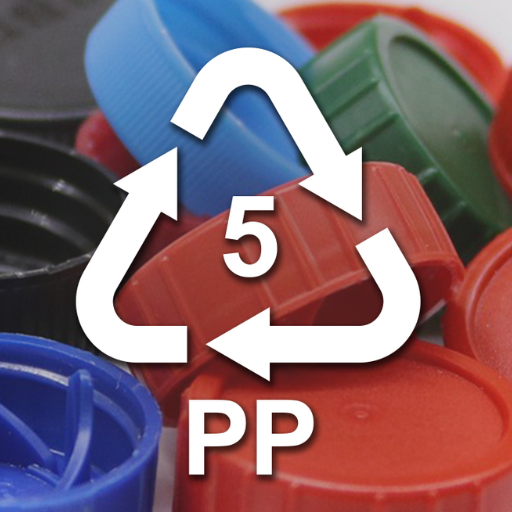
To efficiently recycle Polypropylene (PP), the factional approach to recycling must first be applied. First, there must be collection and sorting of waste polypropylene. After sorting done, extraneous elements such as food remains and all sorts of dust will be cleaned during the cleaning step. In Pre-cleaning washing, the material needs to be reduced in size for efficient shredding through a technique referred to as low energy milling. Shrink size is then followed by melting and pelletizing, where the smaller parts will be turned into pellets molded for other products. The techniques employed to recycle polypropylene is not only useful in managing waste, but also using fewer resources and reducing the level of pollution brought about to nature.
Steps in the Plastic Recycling Process
Collection
The first step in the recycling process involves gathering plastic waste from households, businesses, and industries. Collection methods can include curbside recycling programs, drop-off points, and buy-back centers. Statistically, only about 9% of all plastic waste generated globally is recycled, emphasizing the importance of streamlined collection systems.
Sorting
Once collected, plastics are sorted by type and quality. This step is crucial because different types of plastics (e.g., PET, HDPE, or polypropylene) require specific recycling processes. Advanced sorting technologies, such as infrared and AI-based systems, are increasingly employed to ensure efficient and accurate separation.
Cleaning
After sorting, the plastics are thoroughly cleaned to remove contaminants like food residue, adhesives, or dirt. Contamination can hinder the recycling process and compromise the quality of the recycled material. For instance, research indicates that contamination can reduce recycling efficiency by up to 25%.
Shredding
The cleaned plastic materials are shredded into small pieces or flakes, making them easier to handle and process. Shredding also helps in identifying and further separating materials, as heavier items, such as metals, can be extracted during this phase.
Melting and Reprocessing
The shredded plastic is then melted down and reprocessed into small pellets or granules, often referred to as nurdles. These pellets serve as raw materials for manufacturing new plastic products. For example, recycled PET (rPET) is frequently used in creating new bottles or textiles, contributing to a closed-loop system.
Manufacturing New Products
Finally, the pellets are utilized as feedstock for new products, ranging from packaging materials to clothing fibers and construction materials. According to estimates, using recycled plastics can save up to 88% of energy compared to producing plastics from virgin materials, making it an eco-friendly alternative.
By following these steps, the plastic recycling process not only reduces the volume of waste sent to landfills and oceans but also minimizes resource consumption and energy usage, paving the way for a more sustainable future.
Challenges in Recycling PP Plastic
Recycling polypropylene (PP) plastic presents several significant challenges, despite its widespread usage in products like food containers, packaging, and automotive parts. One of the primary issues is the relatively low recycling rates globally. According to recent industry data, only about 1% of PP plastic is recycled annually, with the majority ending up in landfills or being incinerated.
The difficulty in recycling PP plastic stems from its diverse applications and frequent contamination. PP is often mixed with other plastic types or materials, such as dyes, adhesives, or food residues, making the sorting and cleaning process time-consuming and expensive. Furthermore, current mechanical recycling methods degrade the polymer quality over repeated cycles, leading to a loss of durability and performance in the recycled material.
Another hurdle lies in the lack of standardized infrastructure for collecting and processing PP. Many regions lack the technology or systems necessary to handle PP plastics effectively, impacting the overall efficiency of the recycling process. Additionally, the market demand for recycled PP has been historically low, primarily due to the availability of cheaper virgin materials, discouraging large-scale recycling initiatives.
Emerging solutions, such as advanced chemical recycling and material innovations, aim to address these challenges. For example, chemical recycling can break PP down into its basic monomers for re-polymerization, potentially maintaining material quality regardless of contamination. However, the scalability and cost-effectiveness of these methods are still under evaluation. These challenges underscore the urgent need for collaborative efforts among industries, governments, and researchers to improve PP recycling infrastructure and develop innovative solutions for a sustainable future.
Innovations in Recycling 5 Plastic
Recycling 5 plastic, or polypropylene (PP), has seen remarkable advancements in recent years due to growing efforts in sustainability and innovation. Research shows that PP constitutes roughly 16% of global plastic production, with a significant amount ending up in landfills due to its low recycling rates. Historically, the barriers to recycling PP include the difficulty of sorting it from other plastics and degradation of its quality after multiple cycles.
One key innovation is the adoption of advanced chemical recycling technologies. These processes break PP down into its fundamental building blocks, allowing it to be re-polymerized into high-quality material indistinguishable from virgin plastic. An example is pyrolysis, which uses heat to decompose PP into reusable base chemicals with minimal waste. Additionally, solvent-based purification techniques have gained attention, effectively removing contaminants from used PP to extend its lifecycle.
Another breakthrough is the development of AI-powered sorting systems equipped with optical sensors. These technologies optimize the recycling process by accurately identifying and separating PP items from mixed plastic waste streams, significantly improving efficiency. Studies have suggested that incorporating such systems could increase recycling rates by up to 30%.
Biodegradable additives for PP are also under exploration. Though still in experimental stages, these additives aim to make PP break down safely under specific environmental conditions, reducing its long-term environmental footprint. However, experts urge that this technology must complement, not replace, effective recycling systems.
Industry-wide collaboration is pivotal for scaling these innovations. Pilot programs from companies and governments, such as those offering incentives to integrate recycled PP into consumer goods, are proving effective. For instance, some projects report using up to 50% recycled PP in packaging materials without compromising quality, an initiative that could save tons of virgin plastic annually.
Innovative approaches like these illustrate a growing momentum in transforming PP recycling practices, making circular economies more feasible while addressing the pressing need to reduce plastic waste globally.
Can You Recycle 5 Plastic at Home?
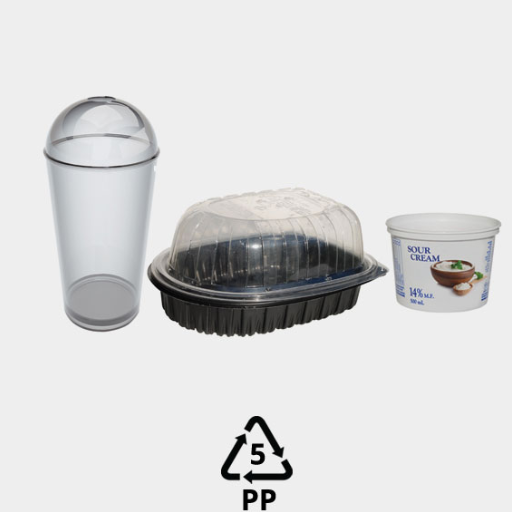
Yes, you can recycle #5 plastic, also known as polypropylene (PP), at home, but it depends on your local recycling program. Many curbside recycling services accept #5 plastics, commonly found in items like yogurt containers, bottle caps, and food tubs. Check with your local recycling guidelines to confirm. If they don’t accept it, some drop-off centers or specialized programs may collect and recycle #5 plastics. Make sure to rinse and clean the items before recycling to ensure they are processed efficiently.
Checking Local Recycling Programs
Understanding your local recycling program is essential to ensure that materials are processed correctly and do not contribute to contamination. Many programs offer detailed guides on what can and cannot be recycled, which may vary by region. For instance, while some areas accept plastics labeled #1 through #7, others may limit acceptance to only #1 and #2, which are PET and HDPE plastics, respectively.
To find accurate and up-to-date information, start by visiting the official website of your city or county’s waste management department. These sites often provide comprehensive recycling charts, interactive tools for waste sorting, or even lists of nearby drop-off points for hard-to-recycle materials. Additionally, many local programs have implemented apps or hotlines to help residents quickly identify disposal options for various products.
If you’re looking to recycle uncommon items like e-waste, batteries, or #5 plastics, you may need to locate specialized recycling centers. For example, studies indicate that more states are partnering with take-back programs or nonprofit organizations to offer these services for free or at a low cost. As of recent, over 50% of municipalities in the U.S. provide e-waste drop-off locations, reflecting a growing focus on responsible waste management.
By staying informed about your local guidelines, rinsing recyclables, and separating materials properly, you can contribute to a more efficient recycling process that reduces waste and supports sustainability efforts in your community.
Items Like Yogurt Containers and Shampoo Bottles
Recycling items such as yogurt containers and shampoo bottles requires close attention to local recycling guidelines and the material’s specific type. Most yogurt containers are made from polypropylene (PP, or plastic #5), a durable plastic that is increasingly accepted in recycling programs. Similarly, shampoo bottles are typically made of high-density polyethylene (HDPE, or plastic #2) or polyethylene terephthalate (PET, or plastic #1), both of which are widely recyclable when properly cleaned.
Statistics show that HDPE and PET plastics account for a significant proportion of plastic packaging waste, with HDPE alone comprising about 12% of global plastic production. However, recycling rates for plastics remain relatively low, hovering around 9%, which underscores the need for diligent sorting and adherence to recycling procedures. To maximize recycling efficiency, ensure that these items are empty, rinsed, and free from labels or caps unless guidelines specify otherwise.
Innovative initiatives are emerging to repurpose these materials, such as transforming yogurt cups into new containers or using recycled plastics from shampoo bottles in furniture and construction materials. By following proper recycling practices and supporting these innovations, consumers can help reduce the environmental footprint of everyday plastics.
Tips for Recycling Polypropylene at Home
Know Your Local Recycling Guidelines
Polypropylene (PP) is commonly labeled as plastic #5. Before recycling, confirm with your local waste management or recycling program if they accept polypropylene. While many facilities are expanding their capabilities, acceptance policies can vary significantly.
Clean and Prepare Your Items
Ensure polypropylene items, such as yogurt cups, bottle caps, and food containers, are thoroughly rinsed to remove any food residue. This prevents contamination in the recycling process, which can render entire batches of recyclables useless. Allow them to dry completely before disposing of them.
Remove Labels and Caps When Necessary
Many recycling facilities require you to remove any labels, films, or non-PP components from the items. For example, some bottle caps are polypropylene but need to be separated from the bottle to streamline processing.
Reuse Before Recycling
Whenever possible, consider repurposing polypropylene items at home. Use containers for storage, craft projects, or seedling pots in gardening. Finding creative reuse solutions extends the life cycle of the material.
Participate in Drop-Off Programs
For polypropylene products that aren’t accepted curbside, look for specialty recycling drop-off locations or programs. Some retailers and manufacturers offer take-back initiatives for specific types of plastic packaging, ensuring proper recycling.
Support Products with Recycled PP
Choose products made from recycled polypropylene whenever possible. Many companies are now using recycled PP in packaging or durable goods like furniture, automotive parts, and textiles. This drives demand for recycled materials and helps close the loop in the recycling process.
Understand Recycling Data and Trends
Globally, studies estimate that only around 1% of polypropylene waste is recycled, with the rest ending up in landfills or the environment. By taking proactive steps at home, consumers can contribute to improving this statistic and reducing plastic pollution. For instance, advancements in chemical recycling technologies are projected to significantly boost polypropylene recovery rates in coming years.
Being informed and mindful about handling polypropylene at home helps reduce waste and supports sustainable recycling systems. Every small effort contributes to a larger environmental impact.
What Do Recycling Codes Numbers Mean for Consumers?
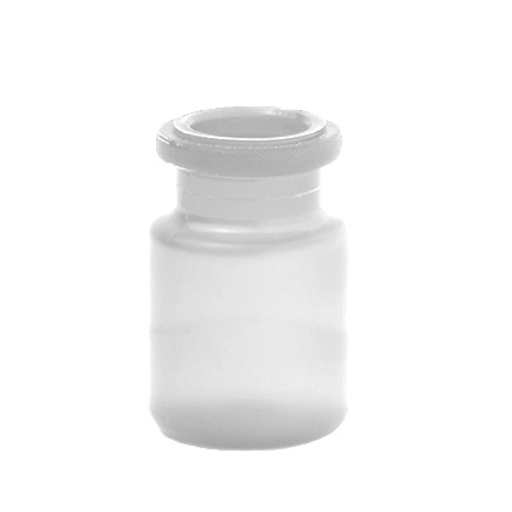
Recycling code numbers, typically found inside the triangular recycling symbol on plastic items, indicate the type of plastic used in the product. These numbers, ranging from 1 to 7, help consumers and recycling facilities identify how to sort and process the material. For example:
1 (PETE): Commonly used for water bottles and food containers, often widely recycled.
2 (HDPE): Found in milk jugs and detergent bottles, also widely accepted for recycling.
3 (PVC): Used in pipes and some packaging, less commonly recycled.
4 (LDPE): Found in plastic bags and some wraps; recycling availability depends on local programs.
5 (PP): Used in yogurt containers and straws, increasingly recyclable in modern systems.
6 (PS): Found in foam cups and takeout containers, but not commonly recycled.
7 (Other): Includes mixed plastics like polycarbonate, with limited recycling options.
By understanding these codes, consumers can make more informed decisions about purchasing and properly disposing of plastic products, supporting effective recycling practices.
Understanding Plastic Recycling Codes
Understanding plastic recycling codes is essential for making responsible choices. Personally, I rely on these codes to identify how to dispose of plastics properly and which products to prioritize for sustainability. For instance, I focus on purchasing items made from types 1 (PET) or 2 (HDPE) plastics, as they are widely recyclable. Avoiding items made from type 6 (PS) or type 7 (Other) plastics helps minimize waste, since these are harder to recycle. Using this knowledge, I can reduce my environmental impact and contribute to more effective recycling practices.
Identifying Recyclable Plastics with the Resin Identification Code
Understanding the Resin Identification Code has simplified my efforts to identify recyclable plastics. By checking the number within the triangle symbol on plastic items, I can quickly determine their recyclability. Plastics labeled with numbers 1 (PET) and 2 (HDPE) are the easiest to recycle and widely accepted by most curbside recycling programs. On the other hand, I try to avoid plastics marked with numbers like 6 (PS) or 7 (Other), as they’re rarely recyclable and often end up in landfills. This quick identification process helps me make informed decisions and support sustainable waste management.
How to Make Eco-Friendly Choices
Making eco-friendly choices in daily life can significantly reduce your environmental footprint and contribute to a healthier planet. Start by focusing on sustainable consumption habits. For instance, consider switching to reusable alternatives for common single-use items such as water bottles, grocery bags, and coffee cups. According to recent studies, replacing single-use plastic bottles with a reusable one can prevent approximately 167 plastic bottles from entering waste streams annually per person.
Energy efficiency is another critical area to focus on. Simple steps like transitioning to LED light bulbs, which use up to 75% less energy and last 25 times longer than incandescent bulbs, can significantly lower energy consumption. Additionally, reducing phantom power usage by unplugging devices when not in use can save an average household up to $200 annually on electricity bills.
When shopping, prioritize products with minimal packaging or those made from recycled or biodegradable materials. Opting for products certified by eco-labels such as USDA Organic, Fair Trade, or Forest Stewardship Council (FSC) ensures that your purchases align with sustainable practices and ethical sourcing.
Lastly, consider your transportation choices. Walking, biking, carpooling, or using public transportation reduces greenhouse gas emissions, with walking and biking emitting zero CO2. If driving is unavoidable, consider switching to hybrid or electric vehicles, which can cut carbon emissions by up to 50% compared to traditional gas-powered cars.
Small, conscious decisions made consistently can lead to a lasting positive impact on the environment, empowering individuals to become part of the solution to global environmental challenges.
What are the Environmental Impacts of 5 Plastic?
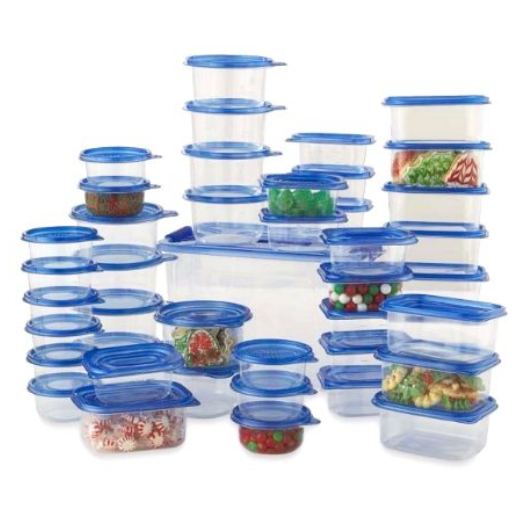
The environmental impacts of plastic, particularly single-use forms, are profound and far-reaching. Plastics contribute significantly to pollution, as they can take hundreds of years to degrade and often break down into microplastics that contaminate soil and water sources. Marine ecosystems are especially vulnerable, with millions of tons of plastic waste entering oceans each year, endangering marine life through ingestion and entanglement. Additionally, the production and incineration of plastic release substantial greenhouse gases, exacerbating climate change. Addressing plastic pollution requires reducing usage, improving recycling systems, and supporting alternatives that are biodegradable or reusable.
Benefits of Recycling PP Plastic
Recycling polypropylene (PP) plastic offers significant environmental, economic, and energy-saving advantages. PP, commonly used in packaging, automotive components, and textiles, is a versatile material. Recycling it helps reduce waste that would otherwise occupy landfills or end up in natural ecosystems, mitigating environmental pollution.
One key benefit is the conservation of resources. Producing recycled polypropylene uses approximately 88-90% less energy compared to manufacturing virgin plastic. For every ton of recycled PP, much fewer fossil fuels are consumed, greatly reducing carbon emissions. This contributes to a lower carbon footprint for industries reliant on this material.
Economically, recycling PP reduces the demand for raw materials, easing pressure on supply chains and stabilizing production costs. The growing market for recycled plastic further creates opportunities for businesses and job creation in recycling industries.
Additionally, PP recycling can foster innovation, as new technologies are being developed to enhance the efficiency and quality of recycled materials. Advanced chemical recycling methods are making it possible to recover high-purity plastic that can be used across diverse industries, providing a sustainable alternative to traditional processes.
By prioritizing PP recycling, we can simultaneously address plastic waste, conserve resources, and promote sustainable industry practices, making it a pivotal step toward a circular economy.
Environmental Concerns with Plastic Waste
Plastic waste presents one of the most pressing environmental challenges of our time, with global plastic production exceeding 390 million metric tons annually. A significant portion of this plastic ends up as waste, with an estimated 12 million tons leaking into oceans every year. This accumulation endangers marine ecosystems, as marine organisms ingest microplastics, mistaking them for food, which disrupts the food chain and introduces toxic substances into marine life.
On land, plastic waste contributes to soil contamination, as non-biodegradable plastics take hundreds of years to decompose. This poses challenges for agricultural productivity and pollutes groundwater resources when toxic chemicals leach from plastics into the soil. Open burning of plastic waste further exacerbates environmental concerns by releasing harmful greenhouse gases such as methane and ethylene, contributing to climate change.
Recycling rates remain alarmingly low, with only 9% of global plastics being recycled effectively. The rest is often mismanaged or sent to landfills, exacerbating the strain on waste management systems. Addressing the environmental concerns associated with plastic waste requires a combination of innovation in recycling technologies, stricter regulations on single-use plastics, and increased public awareness to promote responsible plastic usage and disposal.
Sustainable Alternatives and Reuse Options
Adopting sustainable alternatives and reuse options is key to reducing the environmental impact of plastics. Biodegradable materials, such as polylactic acid (PLA), derived from renewable resources like corn starch or sugarcane, are increasingly being used in packaging and single-use items. According to industry reports, the market for biodegradable plastics is expected to grow significantly, with a compound annual growth rate (CAGR) of 14.2% through 2028, highlighting a shift toward eco-friendly materials.
Another promising alternative is the use of recycled plastics in manufacturing. Closed-loop recycling systems, where plastic is repurposed into the same type of product, help to retain material value and reduce waste. For example, recycled polyethylene terephthalate (rPET) enables the production of new bottles, reducing the reliance on virgin plastic. Case studies show that using rPET results in 79% fewer greenhouse gas emissions compared to producing new plastic.
Reusable options are also gaining traction, with innovations like silicone food storage bags, stainless steel straws, and bamboo utensils offering durable and eco-conscious alternatives to disposable products. Furthermore, the adoption of refill systems for household cleaners or personal care items encourages consumers to significantly reduce packaging waste. Large-scale implementation of these solutions, combined with public participation, could potentially divert millions of tons of plastic waste from landfills annually, contributing to a more sustainable future.
Reference Sources
Frequently Asked Questions (FAQs)
Q: What does the number 5 inside the recycling symbol mean on plastic?
A: The number 5 inside the recycling symbol indicates that the plastic is made of polypropylene, a type of plastic commonly used to make items like pill bottles, yogurt containers, and straws.
Q: Can number 5 plastic be recycled?
A: Yes, number 5 plastic can be recycled, but it depends on your local recycling program. Check with your local facilities to see if they accept polypropylene in their recycling stream.
Q: How does number 5 plastic compare to other plastic numbers like 1 and 4?
A: Number 5 plastic, or polypropylene, is different from number 1 plastic, which is polyethylene terephthalate (PET) used in soda bottles, and number 4 plastic, which is low-density polyethylene (LDPE) used in plastic film and grocery bags. Each type has unique properties and uses in different recycling processes.
Q: What are some common uses of number 5 plastic?
A: Number 5 plastic is commonly used to make containers for yogurt, margarine, takeout meals, and prescription bottles. It is valued for its strength, lightweight, and resistance to heat.
Q: Why is it important to understand plastic recycling numbers?
A: Understanding plastic recycling numbers helps consumers identify the type of plastic and determine the appropriate recycling method. This knowledge aids in sorting plastics for recycling and reduces contamination in the recycling stream.
Q: Is number 5 plastic safe for food use?
A: Yes, number 5 plastic is generally considered safe for food use. It is often used in food containers like yogurt tubs and lunch boxes. However, always check for food safety labels on specific products.
Q: Can number 5 plastic be reused?
A: Yes, number 5 plastic can be reused for various purposes, like storing non-food items or organizing small household items. However, reuse for food or drink should be approached with caution unless the item is specifically labeled for repeated use.
Q: How does polypropylene affect the environment?
A: Polypropylene, or number 5 plastic, is durable and resistant to degradation, which can lead to long-term environmental impact if not properly recycled. Recycling and reusing polypropylene can help mitigate its environmental footprint.
Q: What are the challenges in recycling number 5 plastic?
A: The main challenges in recycling number 5 plastic include limited recycling facilities that accept it, potential contamination from mixed materials, and the need for sorting to ensure a pure recycling stream.

